Introduction
In the landscape of online business, websites serve as the primary gateway for customer interaction. Creating personalized and engaging experiences for the online visitors is top responsibility and one of the best ways to do it is chatbots!
With the emergence of Artificial Intelligence (AI), website chatbots have revolutionized the way businesses engage with their visitors. These AI-driven conversational agents are designed to mimic human interaction, providing instant assistance and personalized experiences round the clock.
The number of websites and apps that offer a chatbot experience has increased by 92% in recent years. (LocaliQ)
The integration of chatbots with websites enables businesses to efficiently handle customer inquiries, provide support, and even facilitate sales conversions.
Website chatbots are capable of understanding user queries, responding in real-time, and guiding visitors through the conversion funnel.
Through proactive engagement, personalized recommendations, and targeted messaging, website chatbots effectively capture visitor attention, foster engagement, and drive conversions.
Continue reading to know more about website chatbots that can engage and convert website visitors.
Understanding Website Chatbots
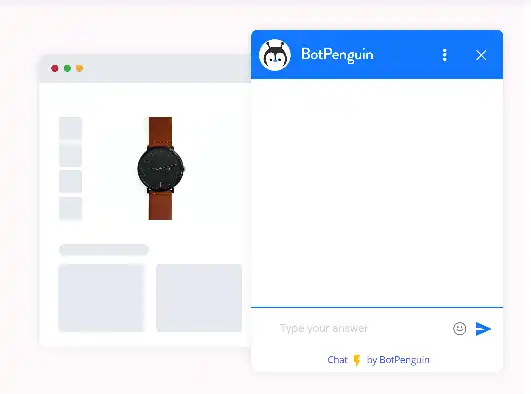
In this section, you’ll find about different website chatbots and the benefits of using them.
Different Types of Website Chatbots and Their Purpose
When it comes to website chatbots, one size doesn't fit all. There are different types of chatbots, each serving a specific purpose. Let's explore a few of them:
Customer Service Chatbots
Chatbots for customer service are developed for answering frequently asked questions, offer assistance, and help clients with typical problems. These bots can respond to problems rapidly, freeing up human customer service representatives to concentrate on more difficult problems.
Sales and Marketing Chatbots
Lead generation and conversion are the two primary goals of sales and marketing chatbots. Based on their wants and preferences, they help customers choose the ideal product or service. These bots may make customized suggestions, have engaging conversations with visitors, and help them go through the sales process.
Virtual Assistants
As personal assistants, virtual assistants help customers with a number of tasks. They are able to give information, issue alerts, plan meetings, and even book reservations. With the ability to interpret natural language, virtual assistants are evolving.
Benefits of Using Chatbots on Websites
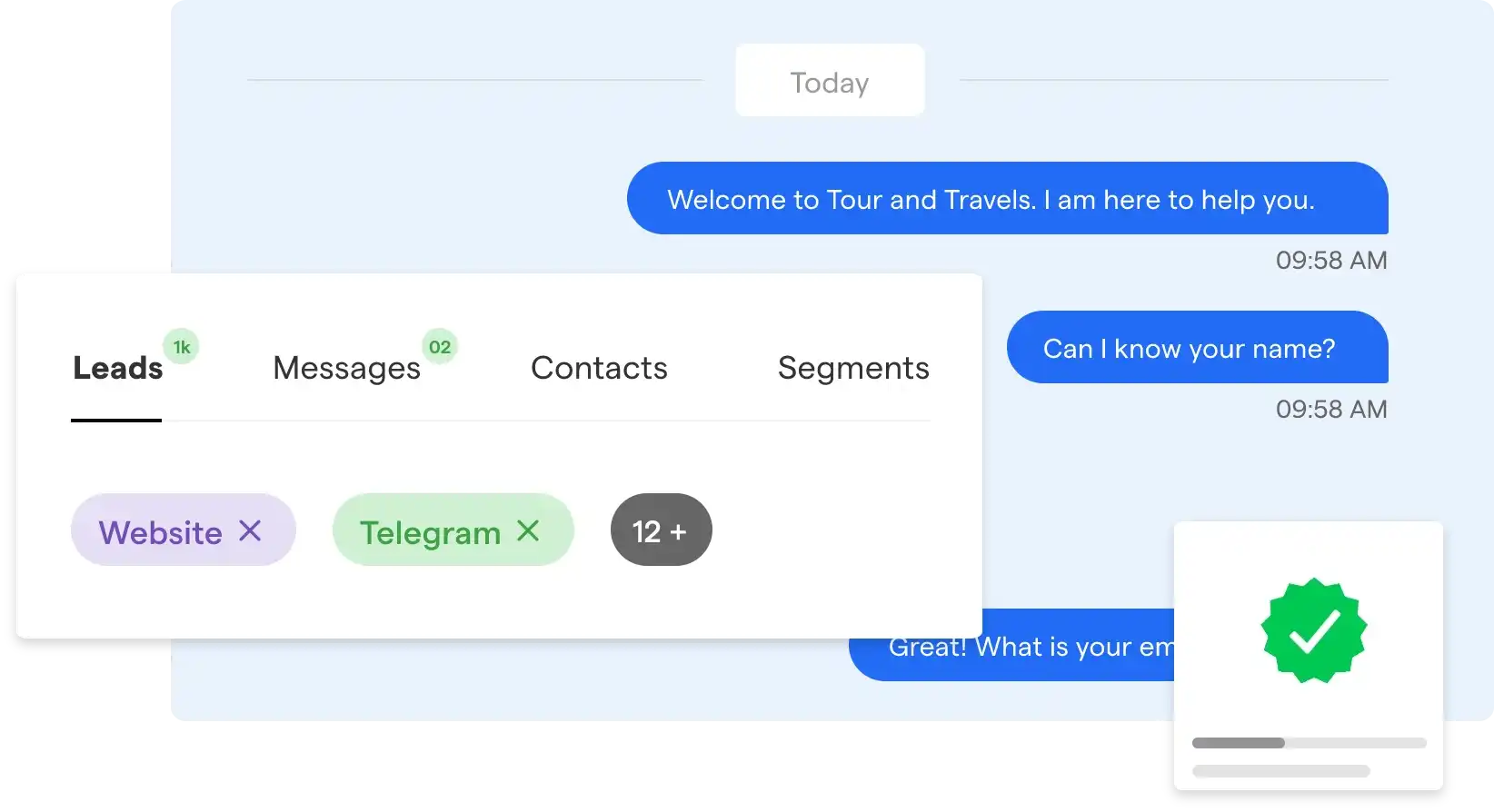
Integrating chatbots into websites offers several key benefits:
24/7 Availability
Website chatbots offer round-the-clock, immediate support, improving the customer experience overall. Customers are more satisfied when they can have their questions addressed and issues fixed immediately.
Cost Savings
Businesses can reduce the need for human interaction by automating customer support and sales procedures. In terms of employing and training customer support agents, this translates into huge cost reductions. For instance, BotPenguin chatbots with advanced NLP and AI-driven come at a low cost of just $4 per month.
Increased Efficiency
Website chatbots are more effective than human agents since they can manage several requests at once. They can respond without delay with speed and accuracy, ensuring that clients get help right away.
Personalization
During conversations, website chatbots are able to keep track of customer preferences and information. With the use of this information, companies can customize their recommendations and replies to each visitor's needs, giving them a more personalized experience.
Suggested Reading:
Get a FREE Website Chatbot for Instant Customer Support
Engaging Visitors with Website Chatbots
The idea that a chatbot can engage customers may seem a little surprising. Let's explore how online chatbots may successfully engage website visitors in engaging discussions and keep them interested:
Personalized Greetings and Conversation Starters
Even in the virtual world, first impressions are important. Visitors can be greeted by chatbots with unique messages when they arrive on a website. Chatbots may start talks in a nice tone, attracting the visitor's interest right away, by utilizing information like their location or referral source.
Providing Real-time Assistance and Support
Website chatbots' basic tasks are to give real-time assistance and support. Chatbots can provide immediate answers to product-related questions or fix technological difficulties. This not only saves time but also provides a smooth experience for visitors.
Like BotPenguin website chatbots are known for providing excellent real-time assistance 24x7. This chatbot also provides customer support without any hassle.
Offering Recommendations Based on User Preferences
In order to provide relevant product or content suggestions, chatbots may look at input from users and previous interactions. Website chatbots transform into virtual personal shoppers by learning the visitor's preferences and assisting them in finding what they're looking for. This unique touch improves the user's experience and raises conversion rates.
Interactive Elements to Keep Visitors Engaged
Interactive components could be included in Website chatbot chats to make them more interesting. To make the whole experience more entertaining, the chatbot may, for example, recommend polls, quizzes, or games to visitors. These interactive features not only keep visitors entertained but also encourage them to stay on the website for longer.
Using Website Chatbots to Understand Visitor Needs
Website chatbots have the potential to be able to gather useful data and insights about visitors' wants and preferences when they interact with users. Let's look at how organizations may use website chatbots to learn more about their customers.
Collecting User Information through Chatbot Interactions
With the help of previous visitor’s conversations, website chatbots can function as a data collecting tool. Chatbots may gather information such as demographics, preferences, and hobbies by posing thoughtful questions. This data may be used to personalize future interactions and offer helpful suggestions.
Analyzing Visitor Behavior and Preferences through Chatbot Data
Businesses can get to know about facts about visitor behavior and preferences from the data collected by website chatbots. Businesses may better understand what motivates conversions, the most popular content among visitors, and the factors that lead to a better user experience by examining patterns and trends.
Businesses may use this information to help them decide how best to optimize their websites and marketing tactics.
Utilizing Chatbot Insights to Improve User Experience
Businesses can improve the customer experience by using information gained through website chatbots conversations. Businesses might make sure that this information is clearly displayed on their websites, for example if chatbot data reveals that visitors regularly inquire about shipping information.
Businesses may improve customer happiness by addressing frequent pain points and giving useful details through the chatbot.
Optimizing Website Chatbot Conversation Flows
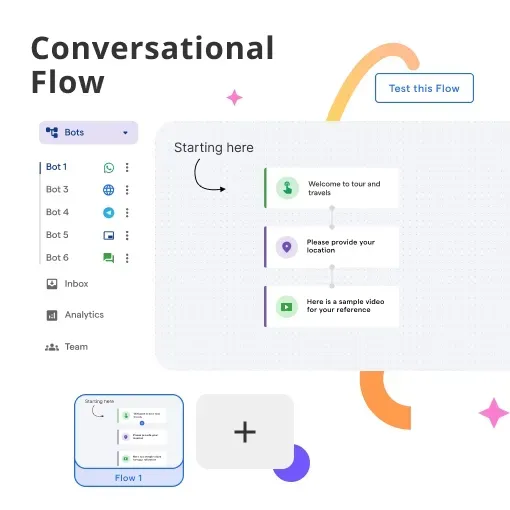
To ensure smooth and effective interactions between website chatbots and visitors, it's crucial to design intuitive conversation flows that guide users towards their desired outcomes.
Designing Intuitive Chatbot Conversation Flows
To provide an effortless user experience, conversation should flow that looks and sounds like real human conversations. To make sure users understand what information is needed, chatbots should pose clear, simple questions. Chatbots might speed up the discussion and point users in the direction of important decisions or solutions by using interactive components like buttons or rapid responses.
Offering Relevant and Helpful Information through Chatbot Responses
The chatbot's replies should be customized to the visitor's individual requirements. Website chatbots may deliver useful information by recognising the conversation's context and making use of the data collected. Chatbots may provide useful and immediate replies that meet visitor needs, whether they're answering commonly asked questions or making product recommendations based on preferences.
Using Natural Language Processing to Enhance Chatbot Interactions
Website chatbots can process human input and respond to it more naturally by using natural language processing (NLP). Chatbots are capable of understanding and analyzing visitor communications using NLP, including taking into account differences in sentence structure or language.
With this skill, the chatbot is better able to comprehend visitor demands and give replies that are more human-like, which even further improves the user experience.
Converting Visitors through Website Chatbots
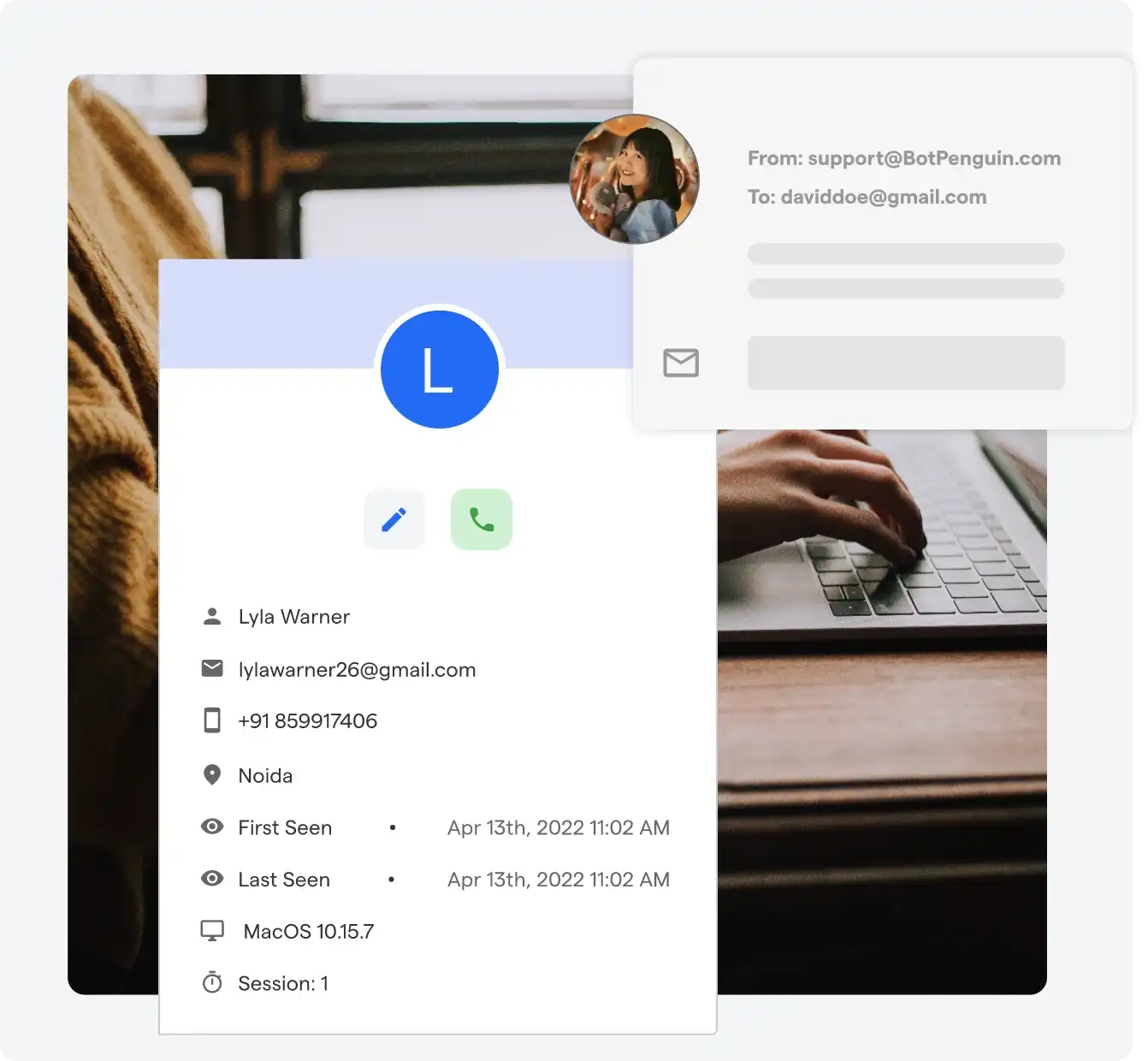
Businesses may now successfully convert website visitors into interested clients by using website chatbots. Follow this:
Understanding User Intent and Offering Tailored Solutions
Understanding visitors' intentions and offering them solutions that are customized to their requirements is necessary for successful engagement. Through conversational exchanges, chatbots may collect data and utilize it to modify the user experience.
Website chatbots can provide personalized recommendations, product ideas, or pertinent material that matches the visitor's interests by analyzing user data and utilizing machine learning algorithms. It boosts the visitor's chance of conversion.
Guiding Visitors through the Conversion Funnel
Website chatbots may function as electronic tour guides for customers as they move through the conversion funnel. Chatbots may guide visitors towards the desired outcome by providing appropriate data, resolving questions or objections, and giving support at every stage of the process.
Chatbots can make any task easier by removing obstacles and reducing friction, which boosts conversion rates, whether it's looking for a quote, completing a purchase, or signing up for a newsletter.
Assisting with Product or Service Selection
Website chatbots may be a great help in the decision-making process by offering advice and information. Chatbots can limit options and make suggestions that fit best to the visitor's needs by requesting information about the user's preferences, budget, or particular demands.
The chatbot may provide product details, costs, and comparisons, helping users in decision-making and boosting the possibility that they will like it.
Encouraging Visitors to Take Action
Encouraging customers to take action is one of chatbots' primary goals. Chatbots can create a sense of urgency or exclusivity by employing language, specific promotions, and limited-time rewards, which encourage visitors to convert.
Users can be actively involved with chatbots based on their behavior, such as when they spend a lot of time on a specific page or come back to the website again. This proactive strategy can encourage visitors to convert, increasing conversions and sales.
Measuring Website Chatbot Success
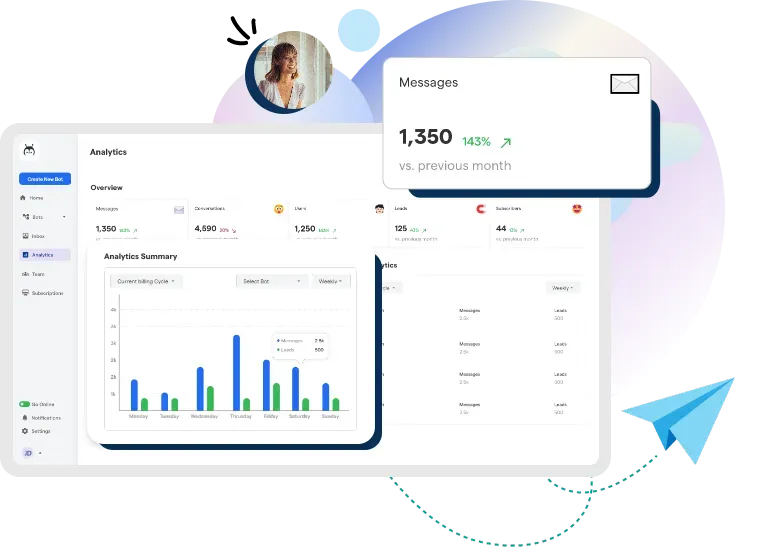
It is important to monitor important metrics, examine conversion rates, and implement data-driven changes to improve chatbot performance in order to assess the efficacy of chatbots in generating conversions and enhancing user experiences.
Tracking Chatbot Engagement Metrics
Understanding how well the website chatbot is interacting with users is essential. It may be gained through engagement data including the quantity of interactions, the length of chats, and the frequency of repeat visitors. To maximize visitor engagement and eventually increase conversions, organizations may discover areas for improvement, optimize chatbot processes, and fine-tune replies by tracking engagement data.
Analyzing Conversion Rates from Chatbot Interactions
Measuring conversion rates specifically attributed to chatbot interactions is essential to understand the impact of the chatbot on the business's overall conversion goals. By tracking conversion rates, businesses can assess the effectiveness of chatbot conversations in driving desired actions, whether it's a purchase, form submission, or any other defined conversion goal.
Comparing conversion rates before and after the implementation of chatbots can provide insights into their effectiveness and ROI.
Making Data-Driven Improvements to Chatbot Performance
To continuously improve chatbot performance, it's crucial to analyze data and make data-driven decisions. By studying user interactions, analyzing feedback, and identifying areas of improvement, businesses can optimize chatbot conversations, refine response accuracy, and enhance user experiences.
This iterative process allows chatbots to evolve, becoming more effective in converting visitors and delivering great customer experiences.
While you measure the performance, let Botpenguin be the performance maker for your website chatbot. If you are looking to implement a chatbot for website, look no further than Botpenguin, the home of chatbot solutions:
- WhatsApp Chatbot
- Facebook Chatbot
- Wordpress Chatbot
- Telegram Chatbot
- Website Chatbot
- Squarespace Chatbot
- Woocommerce Chatbot
- Instagram Chatbot
Best Practices for Implementing Website Chatbots
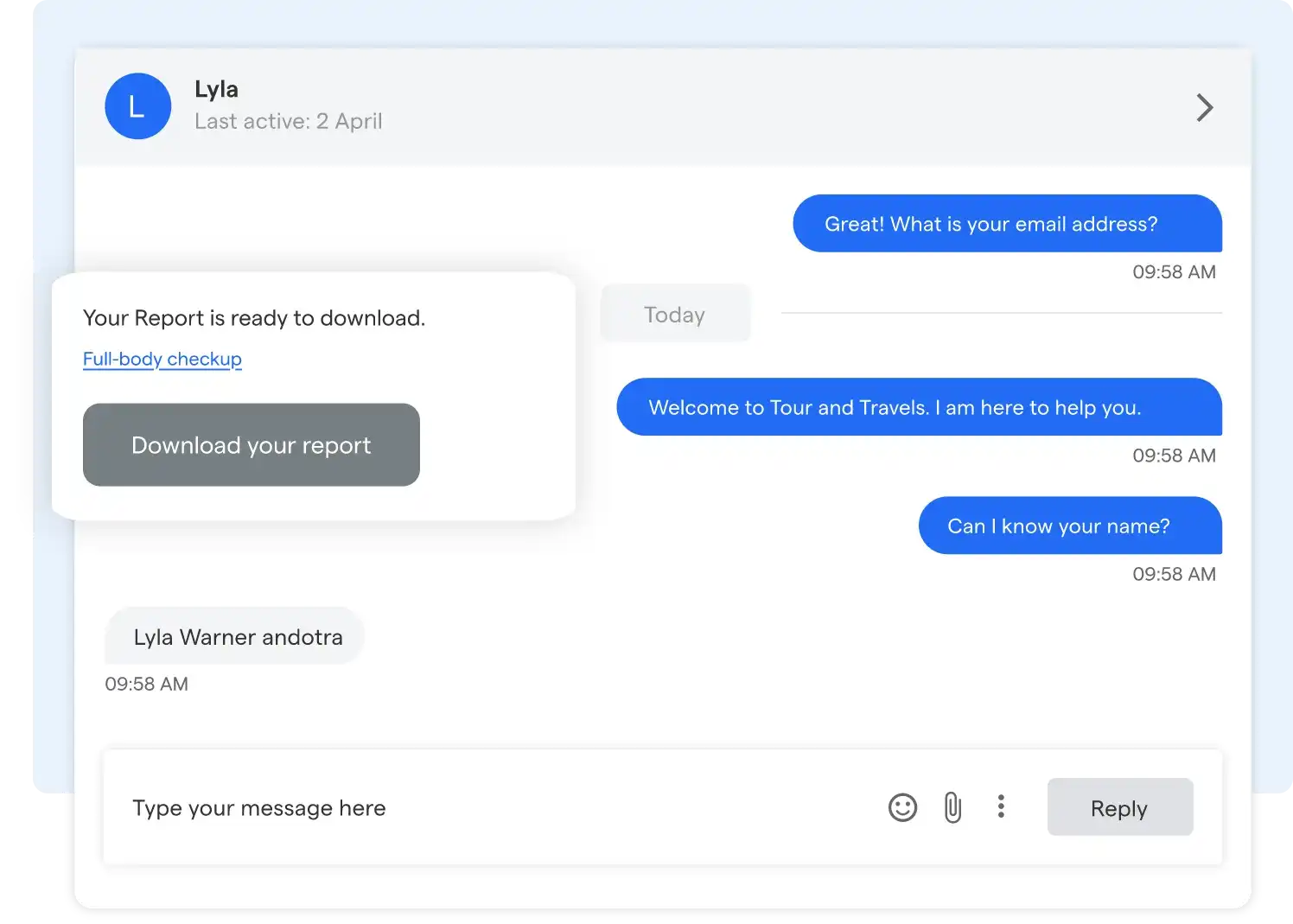
Implementing a website chatbot on your website can provide numerous benefits if done correctly. So let’s see the best practices for implementing website chatbots.
Setting Clear Goals and Objectives for Website Chatbot Implementation
Before implementing a chatbot, it's crucial to define clear goals and objectives that align with your business's overall objectives. Are you looking to increase sales, improve customer support, or streamline lead generation?
By defining these goals, you can tailor your chatbot's functionalities and conversations accordingly. Clear goals will also help you measure the success of your chatbot implementation and make adjustments as needed.
Choosing the Right Chatbot Platform for Your Website
Selecting the right chatbot platform is essential for a successful implementation. Consider factors such as ease of integration, scalability, natural language processing capabilities, and the ability to handle complex conversations.
Research different chatbot platforms and compare their features, pricing, and customer reviews to choose the one that best meets your requirements. Additionally, ensure that the chosen platform integrates seamlessly with your existing website infrastructure.
To save your time, take a look at BotPenguin website chatbot. This chatbot has 60+ integrations to advanced NLP and AI.
Designing Chatbot Interfaces that Align with Your Website's Branding
When designing your chatbot interface, it's essential to maintain consistency with your website's branding. Use colors, fonts, and visual elements that align with your overall brand identity. This will create a seamless user experience, making visitors feel like they are interacting with an extension of your website.
Additionally, consider the tone of voice used by the chatbot and ensure it reflects your brand's personality, whether it's conversational, professional, or quirky.
Continuous Optimization and Testing of Chatbot Performance
To ensure your chatbot is performing optimally, it's important to continuously test and optimize its performance. Regularly review conversations, analyze user feedback, and identify areas for improvement.
Use analytics to track key performance metrics, such as user satisfaction, response time, and completion rates. This data-driven approach will help you identify patterns, refine chatbot responses, and enhance the overall user experience.
Conclusion
In conclusion, the integration of AI chatbots on websites presents a powerful tool for engaging and converting website visitors. Through their ability to provide instant responses, personalized interactions, and round-the-clock availability, website chatbots significantly enhance user experience and drive conversions.
The convenience and accessibility of AI chatbots ensure that visitors receive immediate assistance. It eliminates the frustration of waiting for human support. This quick response time fosters engagement and encourages visitors to explore further.
Moreover, AI chatbots can offer personalized recommendations and assistance based on user preferences and browsing history. By understanding user intent and tailoring responses accordingly, chatbots create a more personalized and engaging experience, increasing the likelihood of conversion.
Furthermore, the continuous availability of website chatbots ensures that visitors can receive assistance at any time, even outside of business hours. This 24/7 support enhances user satisfaction and facilitates conversions by addressing queries and concerns promptly.
BotPenguin is a powerful website chatbot that engages and converts visitors effectively. With its intuitive interface and customizable features, it interacts seamlessly with users, providing instant assistance and guiding them towards conversions.
Boost your website's performance with BotPenguin's dynamic capabilities, driving engagement and increasing sales effortlessly.
Suggested Reading:
7 Best Examples of Website Chatbots
Frequently Asked Questions (FAQs)
How does a website chatbot engage website visitors?
A website chatbot engages visitors by presenting personalized messages and recommendations based on their behavior, offering prompt assistance, and guiding them through the website to find relevant information or products.
Can a website chatbot convert website visitors into customers?
Yes, a chatbot can convert website visitors into customers by providing real-time responses to queries, offering product suggestions, facilitating seamless transactions, and providing personalized recommendations based on visitor preferences and behavior.
What features should a website chatbot have to engage and convert visitors effectively?
A chatbot should have features like natural language processing, advanced analytics, integration with CRM systems, proactive customer engagement, recommendation engine, personalized notifications, and seamless handover to human agents to effectively engage and convert website visitors.
How can a website chatbot assist visitors in finding relevant information?
A website chatbot can assist visitors by asking questions to understand their needs, providing guided navigation, offering search functionality, and presenting relevant content or product suggestions based on their preferences or search queries.
Can a Website chatbot assist visitors in making informed purchase decisions?
Yes, a chatbot can assist visitors in making informed purchase decisions by providing product comparisons, highlighting features and benefits, sharing customer reviews, offering personalized recommendations, and addressing any concerns or questions.

